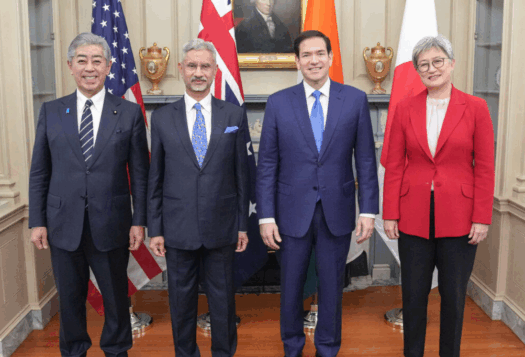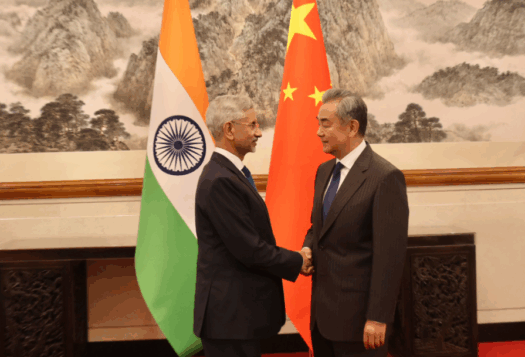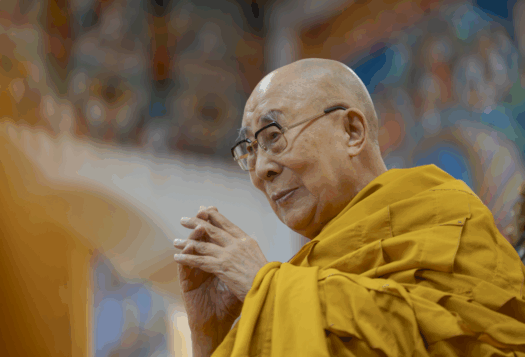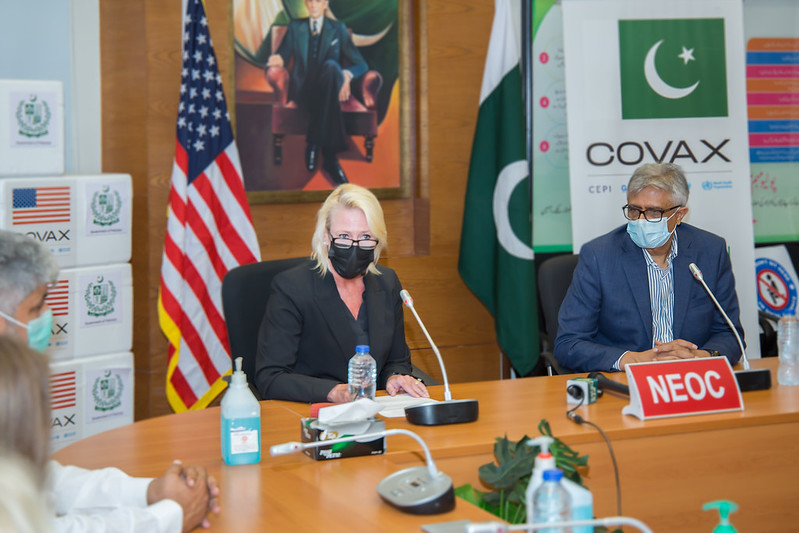
On April 12, Shehbaz Sharif became Pakistan’s 23rd Prime Minister, following Imran Khan’s ouster in the opposition’s no-confidence vote. Khan alleged his removal resulted from a U.S.-sponsored plot to punish him for pursuing an independent foreign policy with China and Russia—an allegation for which he has yet to provide any evidence. Khan’s decision to drag foreign policy into his domestic political campaign and use it as a tool for his political survival has exacerbated the already strained relationship between the United States and Pakistan. Given these realities, Shehbaz Sharif will have much work to do to repair U.S.-Pakistan relations. The U.S.’s desire to cultivate good ties with the new Pakistani government while also urging them to use its leverage with the Taliban to fulfill the international community’s demands makes it evident that the scope of bilateral relations is narrow and security-centric. Despite a new administration in Pakistan, U.S.-Pakistan relations are likely to continue to be security focused on issues such as nuclear proliferation, terrorism, and Afghanistan. Still, while the scope of the relations is likely to remain narrow it is in Pakistan’s best interests to move towards a reset in its ties with the United States.
U.S.-Pakistan Ties under Imran Khan
U.S.-Pakistan ties were particularly turbulent under Imran Khan. In 2018, bilateral relations hit a low when former U.S. President Donald Trump cut security assistance to Pakistan. However, the relationship saw some improvement after the Trump-Khan meeting at the White House in 2019. Afterward, Pakistan played a crucial role in facilitating talks between Washington and the Taliban in Qatar, which paved the way for the U.S. withdrawal from Afghanistan through the 2020 Doha Agreement. However, by the end of the year, the relationship plummeted when Pakistan received the cold shoulder from the newly elected Biden administration.
The U.S.’s desire to cultivate good ties with the new Pakistani government while also urging them to use its leverage with the Taliban to fulfill the international community’s demands makes it evident that the scope of bilateral relations is very narrow and security-centric.
The Biden administration’s relationship with Pakistan started to deteriorate immediately after taking office, when Biden did not call Khan, frustrating the prime minister and becoming a source of controversy. The U.S. pullout from Afghanistan in August 2021 made Pakistan relevant to its foreign policy goals once again, but mainly through the lens of counterterrorism and border security, which continues into the present. After their exit from Afghanistan, the Biden administration’s focus on strategic competition with China in Asia increased, keeping Pakistan—with its economic ties to China—at a distance. Subsequently, Khan publicly blamed the U.S. for pushing Pakistan into its so-called War on Terror, resulting in over 80,000 human lives and economic losses of around USD $123 billion. The building animosity between the Biden administration and then-Prime Minister Khan made the U.S. a convenient scapegoat when Khan lost the vote of no confidence.
U.S.-Pakistan Ties Under Sharif
Sharif has not only inherited an economy that is on the ventilator, but inflation is in double digits, at over 10 percent this year. The new Prime Minister is up against the daunting challenge of resetting ties with the United States, which has immense influence over the IMF and other financial institutions that control Pakistan’s ability to receive a bailout package.
Realizing the gravity of this challenge, Sharif expressed the desire to have friendly ties with the United States in his inaugural speech to Parliament. The United States is Pakistan’s largest export followed by China. Presently, Pakistan is on its 22nd International Monetary Fund (IMF) program, which Shehbaz’s government is already in talks to revive, paused after the Khan government failure to implement some of the loans terms. Likewise, Islamabad also needs Washington’s assistance to get off the Financial Action Task Force’s gray list for alleged money laundering and terror financing.
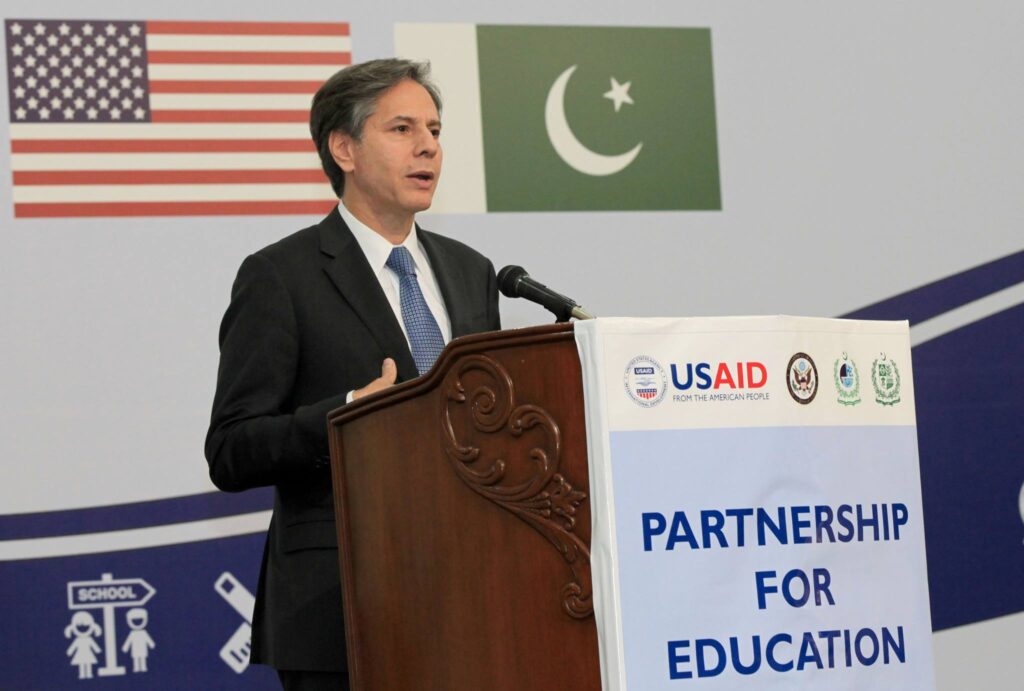
The Pakistan People’s Party (PPP)—coalition partners of Sharif’s PML-N—has historically had good ties with President Biden and will likely to continue to use its previous connections in Washington D.C. to repair the strained relationship. Such endeavors will also have the blessings and support of Pakistan’s powerful military establishment, which wants to balance ties with China and the United States. For instance, Pakistan’s Army chief General Qamar Javed Bajwa emphasized Pakistan’s important and long-standing strategic ties with the U.S. at the Islamabad Security Dialogue last month, standing in sharp contrast to Khan’s anti-American rhetoric. Bajwa’s statements also indicated that the military establishment was unhappy with Khan’s foreign policy outlook.
Even if U.S.-Pakistan ties improve, they are likely to remain transactional and security-centric. The U.S.’s long-term strategic interest in containing China aligns with India, not Pakistan, as Islamabad’s ties with Beijing enter a new era of bilateral strategic and economic cooperation with the initiation of the China-Pakistan Economic Corridor (CPEC). The United States will view its future engagement with the future governments in Pakistan through this strategic lens.
The U.S.’s long-term strategic interest in containing China aligns with India, not Pakistan, as Islamabad’s ties with Beijing enter a new era of bilateral strategic and economic cooperation with the continued development of the China-Pakistan Economic Corridor (CPEC).
However, there are signs that the relationship has begun to strike a different tone than it did under Khan. Soon after Shehbaz assumed prime minister’s office, U.S. Secretary of State Antony Blinken sent his congratulations and maintained that “the United States views a strong, prosperous, and democratic Pakistan as essential for the interests of both of our countries.” Yet, at the same time, the joint statement after the Fourth Annual U.S.-India 2+2 dialogue in Washington urged Pakistan not to allow its territory to be used for cross-border terrorism, prompting Pakistan’s Foreign Office to reject the statement as unwarranted. Despite the initial exchange, Secretary Blinken called Pakistan’s newly appointed Foreign Minister Bilawal Bhutto Zardari and invited him to attend a ministerial meeting on the “Global Food Security Call to Action” at the UN headquarters in New York on May 18. Meanwhile, Pakistan is trying to set up a one-on-one meeting between the secretaries during the conference, signaling that Islamabad believes that this is an opportunity to reset ties.
Conclusion
Even if the scope of the U.S.-Pakistan relationship remains narrow, Shehbaz’s government will still need to do much-needed damage control to repair U.S.-Pakistan relations. Pakistan has signaled that it wants friendly relations based on realistic assessments rather than the populist rhetoric witnessed under Khan’s administration. The United States would also want to regain lost momentum and reset its perception among Pakistanis by renewed ties with the new Pakistani government. Broadening the lens of relationship outside the security-centric focus may help this. The United States could accomplish this goal through pushing the IMF to assist Pakistan’s dwindling economy, advocating Pakistan to get off FATF’s grey list, and acknowledging Pakistan’s sacrifices during the War on Terror. Pakistan meanwhile will also need to make earnest efforts to bridge the fallout and trust deficit that deepened during the Vote of Confidence. Pakistani Foreign Minister Bhutto’s visit to New York only weeks after former Prime Minister Khan’s Russia visit in the midst of the latter’s Ukraine invasion, is also an indication that Pakistan values Washington during the critical times of great power rivalry. This year, Islamabad and Washington are celebrating the 75th anniversary of diplomatic relations, which would be more than an appropriate time to reset ties.
***
Image 1: U.S. Department of State via Flickr
Image 2: U.S. Department of State via Flickr
